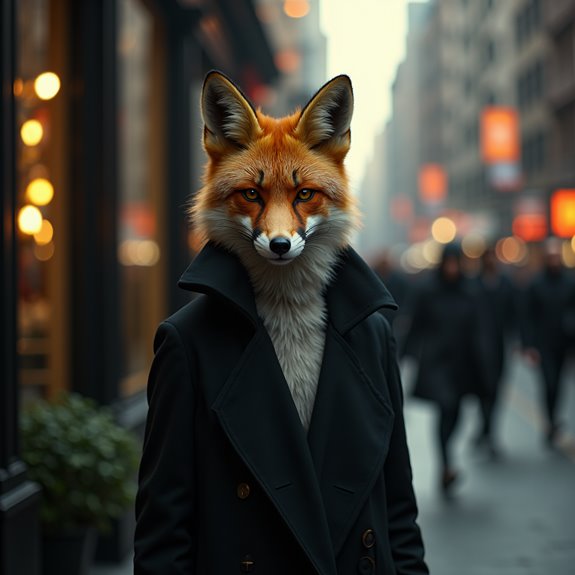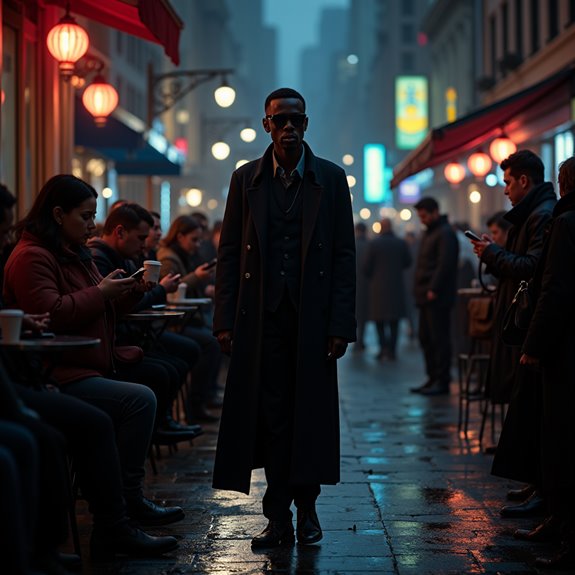Do Shapeshifters Walk Among Us in Modern Times?
The idea of shapeshifters existing in today’s world raises intriguing questions about identity and perception. Reports of individuals who appear to change form or display extraordinary abilities challenge our understanding of reality. Some dismiss these accounts as mere fabrications or reflections of societal fears, while others ponder deeper meanings behind such phenomena. As these discussions unfold, one must wonder: what do these mysterious encounters reveal about the complexities of our existence?
Introduction

In a world that constantly evolves, the fascination with shapeshifters remains a compelling topic across cultures and mediums. These mythical beings, often depicted as transforming from one form to another, tap into a deep-rooted fascination with identity and its fluidity. In literature, films, and television, shapeshifters symbolize the complexities of human nature. They challenge societal norms, exploring themes of deception, acceptance, and transformation. The idea resonates in modern society as people grapple with their identities, searching for authenticity and connection. While ancient myths provide a backdrop, contemporary portrayals invite new interpretations. Ultimately, the enduring allure of shapeshifters highlights humanity’s desire to transcend boundaries and explore the enigmatic possibilities of existence itself.
Ancient Shapeshifting Mythology

Throughout history, numerous cultures have woven tales of shapeshifters into their mythologies, revealing a rich tapestry of beliefs and narratives. In Norse mythology, the god Loki transforms into various animals, illustrating both cunning and chaos. Similarly, Native American folklore shares stories of skinwalkers, individuals who can shift into animal forms, often wielding their powers for both protection and malevolence. In ancient India, deities like Vishnu exhibit shapeshifting abilities, taking on multiple avatars to restore balance. The Celtic tradition also embraces the concept of changelings, beings that shift between human and fairy domains. These varied tales highlight humanity’s enduring fascination with transformation, embodying deeper themes of identity, power, and the mysterious forces of nature that surround us.
Notable Cases or Sightings

While stories of shapeshifters have long been rooted in folklore, notable sightings and encounters in modern times add an intriguing layer to the discussion. In 2008, witnesses in a small town in Brazil reported a mysterious figure that seemed to morph between human and animal forms. Locals described it as a large, reflective creature that darted in and out of the trees, evoking both fear and charm. Another instance occurred in 2015 in a suburban neighborhood where residents claimed to have spotted a woman who effortlessly shifted her appearance to resemble different people. These cases fuel curiosity about the existence of shapeshifters today, leaving people to wonder what lies behind these mesmerizing phenomena. The line between myth and reality continues to blur.
Common Theories or Explanations
Although many dismiss shapeshifter tales as mere myths, several theories attempt to explain these elusive phenomena. Some suggest that shapeshifting represents psychological archetypes, allowing individuals to express their desires or fears. Others propose that these stories stem from misinterpretations of real-life encounters with people exhibiting unusual behaviors. Genetic mutations may also play a role, leading some to believe that certain individuals possess rare abilities to alter their appearances. Additionally, folklore and cultural narratives reinforce the idea of shapeshifting as a means of understanding the unknown. Finally, some theorists argue that these accounts reflect collective human imagination, merging fantasy with reality in ways that fascinate and provoke thought, inviting further exploration into the boundaries between myth and truth.
Frequently Asked Questions
Can Shapeshifters Blend Into Human Society Undetected?
Shapeshifters can blend into human society seamlessly. They’ve mastered human behavior, adopting traits and mannerisms effortlessly. This uncanny ability allows them to navigate everyday life without raising suspicion, living among people unnoticed and undetected.
Are There Any Scientific Studies on Shapeshifting Phenomena?
He found few scientific studies exploring shapeshifting phenomena. Most research focuses on mythology and folklore rather than empirical evidence, leaving the topic largely speculative. Researchers often dismiss shapeshifting as a cultural narrative rather than a biological reality.
What Role Do Cultural Beliefs Play in Shapeshifting Stories?
Cultural beliefs shape shapeshifting stories, highlighting societal fears or desires. They often reflect moral lessons or historical events. In various cultures, these tales convey powerful messages about identity, transformation, and the complexities of human nature.
How Do Shapeshifters Reportedly Feel About Their Abilities?
Shapeshifters often feel a mix of pride and burden regarding their abilities. They relish their unique perspectives, yet grapple with the isolation and distrust that accompany their extraordinary gifts, shaping their experiences and relationships in profound ways.
Are Shapeshifters Linked to Any Specific Modern Organizations or Groups?
Shapeshifters aren’t definitively linked to any modern organizations or groups. However, some enthusiasts claim they form clandestine communities, exchanging experiences and knowledge, while maintaining secrecy to protect their identities from outsiders who might not understand.


